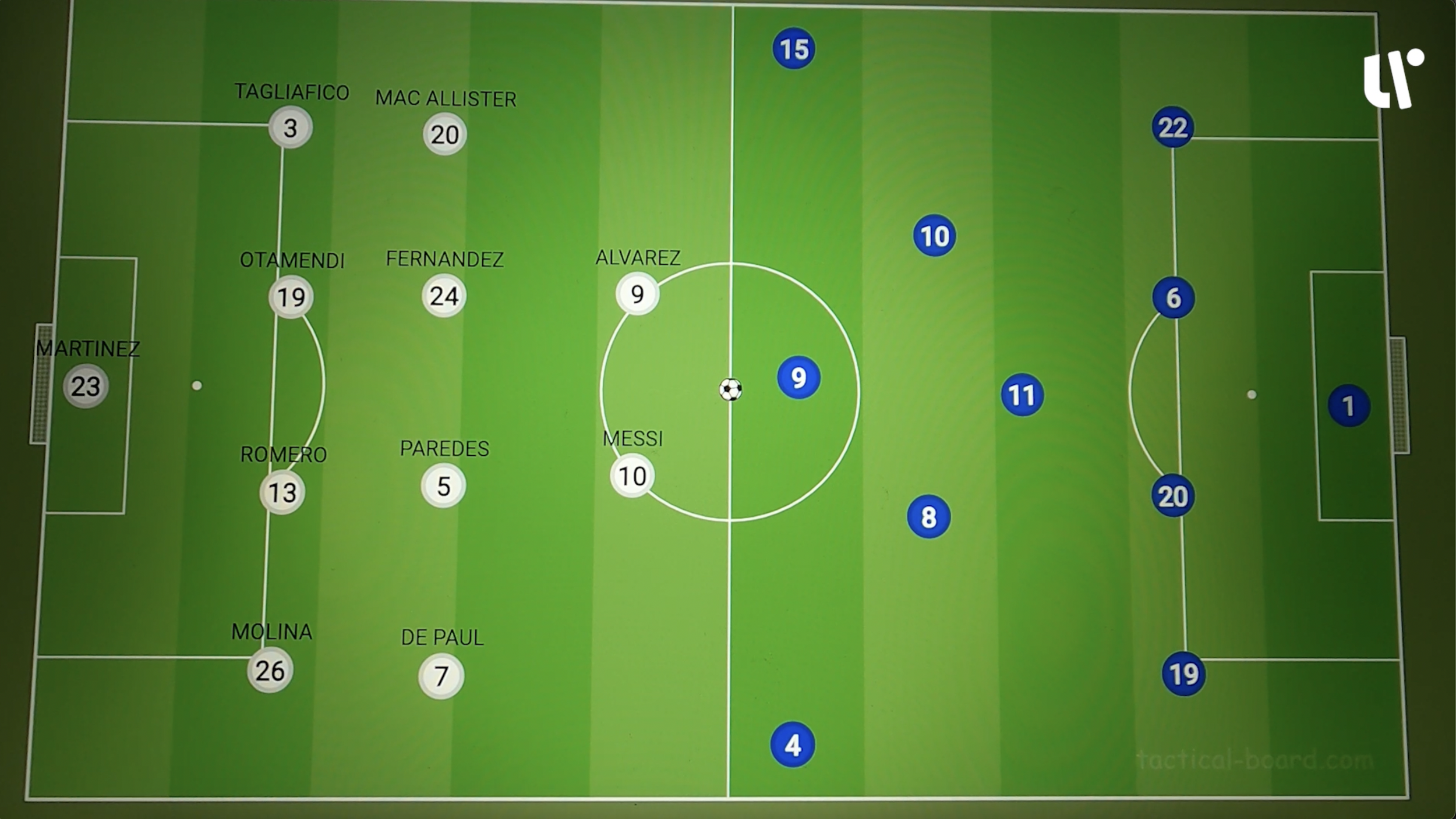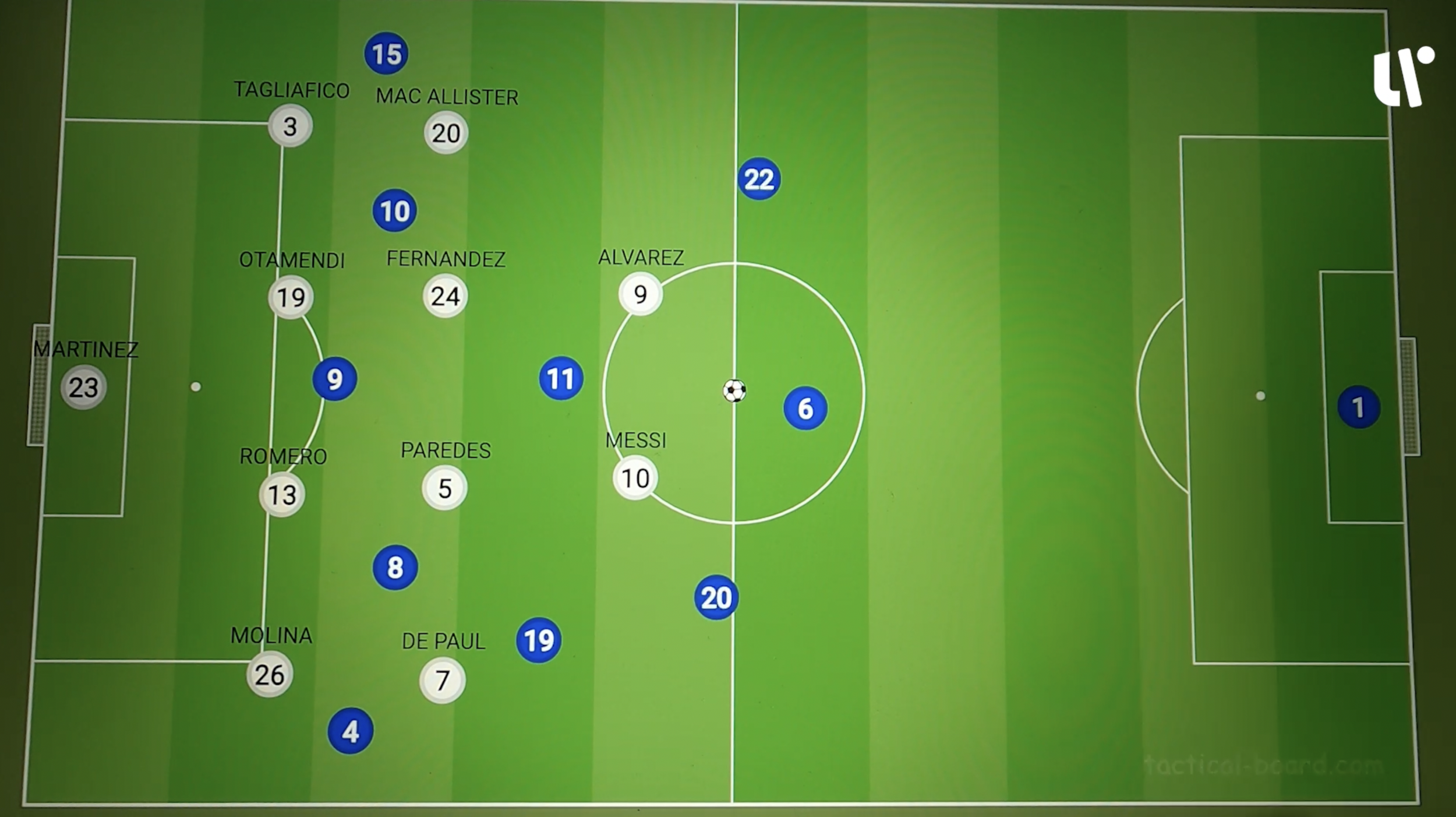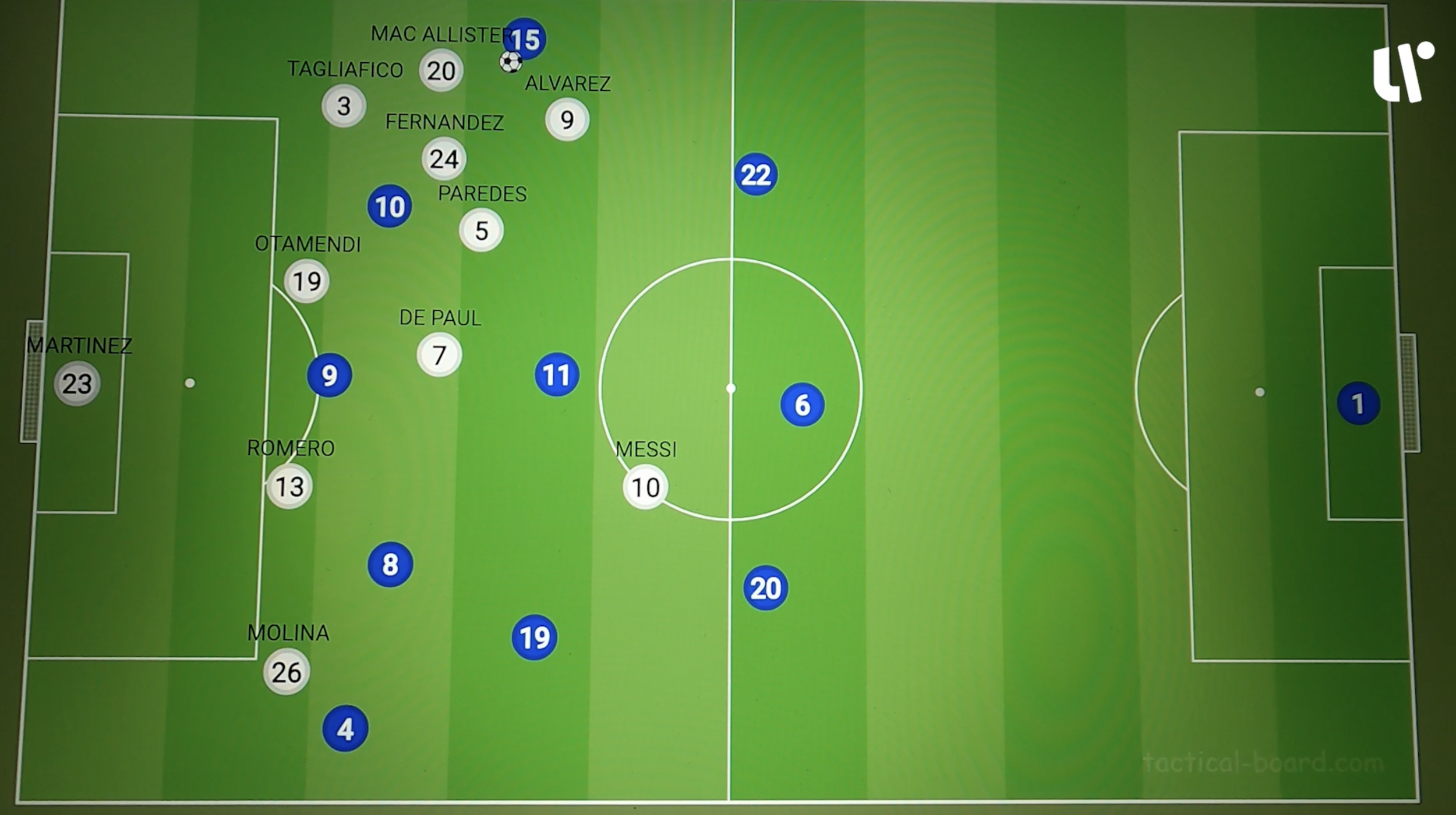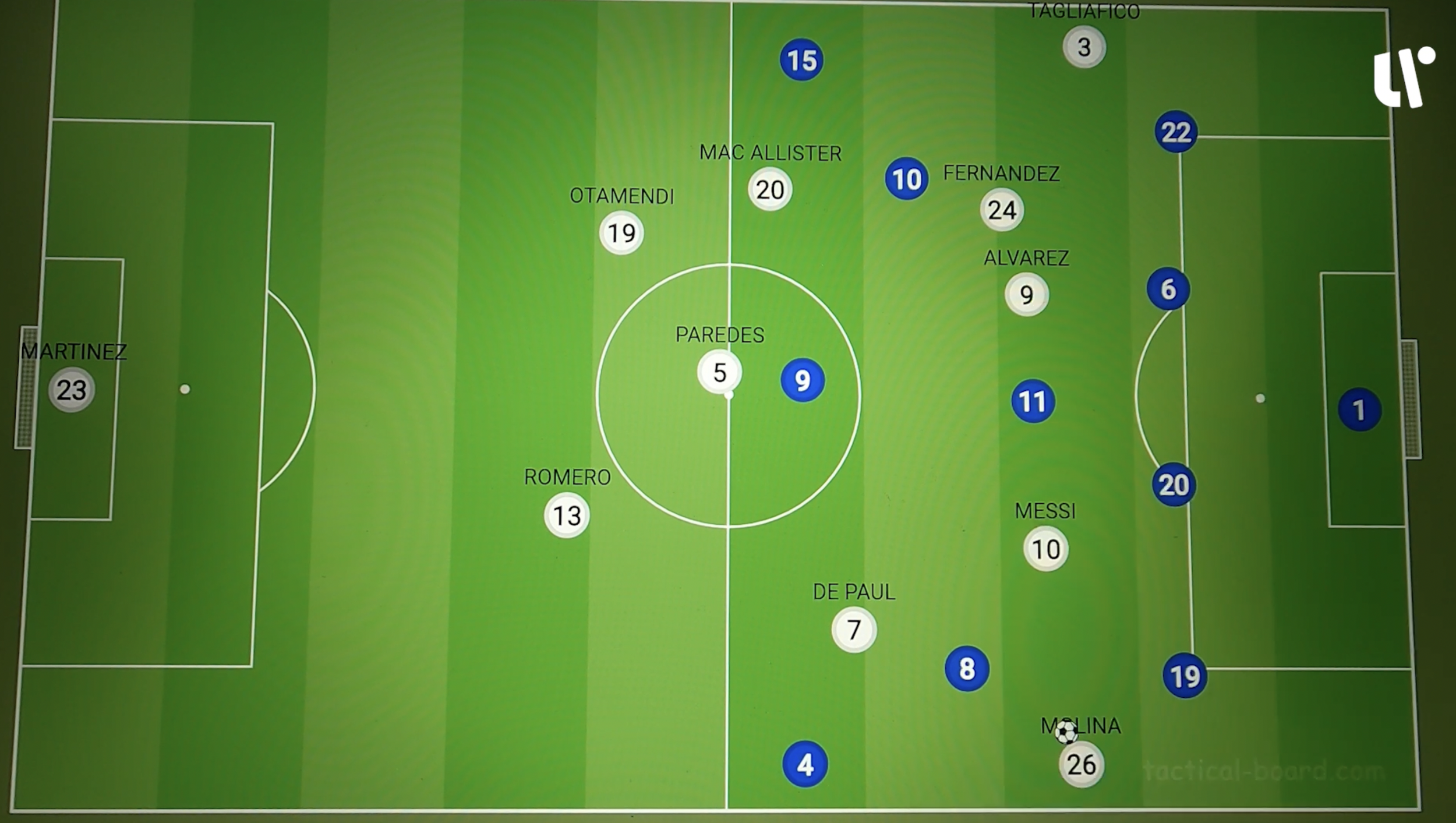How Lionel Scaloni changed Argentina - World Cup 22'
Argentina have without a doubt been the most tactically improved team of the World Cup tournament...
The side endured a shaky start to say the least as they faltered in a shock defeat to Saudi Arabia.
But they soon kicked on and now find themselves in the final, in what could make for a fairytale narrative for Lionel Messi, who has confirmed that this will be his World Cup bow.
Watch the video
Constant Tweaks
Right from the off, it is worth noting that Argentina have not set-up in the same way throughout the tournament, which has made them unpredictable.
Scaloni has changed formation for each of Argentina’s six games, switching from a 4-4-2 base, to a diamond, to a three-at-the-back system and even a 4-3-3.
In many ways it’s the perfect approach for a knockout tournament. But whilst the tactics have varied, the philosophy has always been the same.
Scaloni has built this side on the premise of being direct in their approach, and that has been a constant whether they’ve had the lion’s share of possession or not.
Changing of the guard
In the six games that Argentina have played, they’ve averaged just 58.2% of possession proceedings, which is around 7% less than what they averaged in the 2018 World Cup tournament that was led by Jorge Sampaoli.
What we’ve actually seen in this tournament is a changing of the guard to some extent.
At club level, where managers have more success in implementing their philosophy throughout the individual phases, we often find successful teams dominating in each phase.
Those sides usually have the lion’s share of possession, which usually doubles up as a game management tactic because the opposition obviously can’t score if they don’t have the ball.
But, hardly having the ball has been one of the biggest trends among the most successful teams across the tournament, with counter-attacking football fully back in fashion.
Three of the five highest-possession playing teams failed to even reach or surpass the round of 16, with second-and-third place England and Portugal faltering in the quarter-finals.
The point is, the highest-possession playing sides of the tournament are all out with none managing to progress to the semi-finals.
Whilst, some of the lower-possession playing sides like Morocco, France and Croatia managed to join Argentina in progressing to the latter stages of the tournament.
Argentina at their best
So playing into this, Scaloni’s side have been at their best in back and forth games.
By not having as much of the ball, they are able to make the game more open by allowing the opposition to progress.
We’ve seen this in the quarter-final game against the Netherlands as well as the 3-0 semi-final win against Croatia, in which Scaloni’s side had just 39% of the ball.
Out of possession
So, looking at the semi-final bout, Argentina poetically returned to the formation that they started the tournament with, which was the 4-4-2 system.
Argentina’s 4-4-2 Base
Off the ball, Scaloni’s side looked to draw the opposition with a mid-to-low-block method, sticking in their native 4-4-2 as the Croats came rushing forward.
4-4-2 mid-low-block
The Argentine’s drew the Croats out using this approach
Interestingly, there was an initial overloading press whenever Croatia entered the mid-third.
The midfield four were integral to sustaining this pressure, with Lionel Messi’s strike partner Julian Alvarez happy to join in with these defensive duties.
So, when Croatia would look to stretch play out on the flanks, an overload of three-to-four players would all press, with Alvarez acting as the trigger in most cases.
Argentina’s overloading press
The side would look to close down space immediately whenever the ball was played out-wide
If Croatia were successful in working the ball into the centre of the pitch, those players would quickly return and drop into a low-block, fluctuating between a 4-3-2-1 shape, but ultimately returning into a neat 4-4-2.
Meanwhile, the back four were happy to stay back, with the bank of four in front given licence to press aggressively, with spaces behind them astutely covered.
In-Possession
When Argentina had the ball, they would progress play as fast as possible.
On counter-attacks, the likes of Alvarez and Messi were key, with another initiators charging alongside them. The rest of the team would stay back, rather than running the risk of committing bodies forward to then be hit on the counter.
In more sustained attacks, there was a real system in place.
Building on from the full-back system that we saw against the Netherlands, Molina, and in this case, Tagliafico served as makeshift wingers.
Whenever Argentina worked the ball up, the fullbacks would act as wingers, sitting high and wide to stretch play.
It was a process that ensured there were five attackers in the front-line, which ultimately created space in the central areas, with Croatia spread.
Argentina in-possession
The full-backs were integral to Argentina’s overload in the final third
Whilst Messi was of course granted the ability to roam free in the final third, the likes of Enzo Fernandez, who is a defensive midfielder by trade, was happy to be the more offensive player in the pivot-duo with Leandro Paredes.
Conclusion
In both phases, Argentina were solid and always looked threatening on the attack.
Their adaptation of playing with a lower amount of possession is a style that works well and tricks the opposition into committing bodies.
In reality, Scaloni’s low-block is just a guise to draw out the opposition and allow his attackers to shine.
The World Cup final against France will certainly be an interesting one, with Deschamp’s side happy to see even less of the ball.
It should be fun, it should be end to end, it COULD be Lionel Messi’s time to shine.




